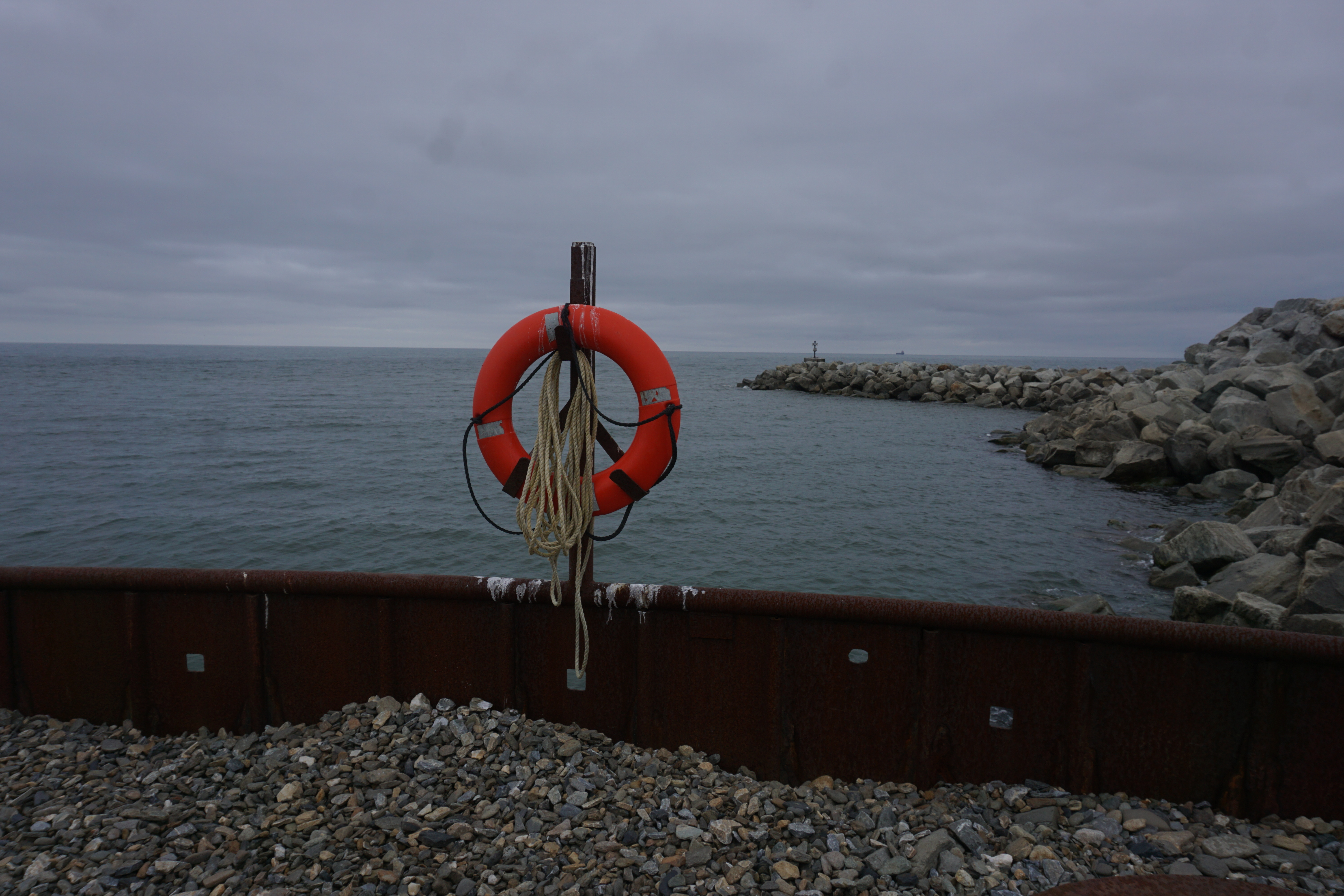Nome’s port expansion plan wins official Corps of Engineers approval
Funding for the plan now depends on the America’s Water Infrastructure Act of 2020, a bill currently before Congress.

The plan to expand Nome, Alaska’s port into a larger deepwater facility to service Arctic-traveling vessels won approval on Friday from the U.S. Army Corps of Engineers.
Lt. Gen. Todd Semonite, commanding general of the Corps, granted the agency’s approval in a Washington, D.C. ceremony where he signed the Chief’s Report for the Port of Nome Modification Feasibility Study.
The expansion plan proposes extending the harbor much farther into Norton Sound and dredging the outer area so that it is deep enough to accommodate big vessels like fuel tankers and large cruise ships. The expansion would add 3,484 feet to the port’s existing causeway, with an L-shaped design that would nearly double the reach out into Norton Sound and shield the outer harbor areas from winds and waves. Dredging operations would create depths of 40 feet in the outer areas, nearly twice the maximum depths at the existing harbor.
Cost of the expansion is currently estimated at $491 million, according to the Corps.
The next step is to get the money. The vehicle for federal funding would be a bill pending in Congress, the America’s Water Infrastructure Act of 2020. The city of Nome would also have to contribute some of the financing, according to the expansion plan.
The project, if it is completed, would support ship traffic and marine activity that is increasing as Arctic sea ice retreats, officials said.
“We’ve developed a feasible engineering solution that provides safe, reliable and efficient navigation improvements to support a critical region of the state,” Col. David Hibner, acting commander of the Alaska District, said in a statement. “Delivery of this important infrastructure will help to strengthen commerce and national security in the Arctic.”
Members of Alaska’s Congressional delegation, in a joint statement, said they will push to secure the necessary federal funding.
“I’ve long advocated for a system of ports to support the increasing ship traffic in the Arctic, provide greater accessibility for Arctic communities, and help Alaska and our nation to develop a strong presence in the Arctic region. This infrastructure is vital as traffic through the Bering Strait increases, and will provide a deep water port in the region for both civilian and military vessels,” Sen. Lisa Murkowski said in the statement. “This project will also bring down the barriers that rural communities in the region face in accessing cargo, fuel, and marine resources. We’ve built up strong support for the need to build a deep-water port near the Arctic,”
Plans for the Nome port expansion go back more than a decade.
The idea of a large Arctic Alaska harbor got serious consideration at a 2008 ports conference held in by the Corps in Anchorage. Three years later, the Corps, the Alaska Department of Transportation and Public Facilities and other agencies in 2011 launched a study of options for a deepwater Arctic Alaska port, with a location yet to be determined. Meanwhile, officials in Nome were coming up with ideas for their city to serve as that Arctic port. Over the years, Nome emerged as the leading candidate for such a facility, thanks to its existing port and the supporting infrastructure in what is the largest Alaska community in the Bering Strait region.
The Corps’ official approval was a “significant milestone” in a long effort, the City of Nome said in a statement posted on Facebook.
“The planned Project will alleviate existing vessel restrictions caused by insufficient depths and dock space, and provide the first refueling and resupply port in the U.S. Arctic for deep-draft vessels,” the city’s statement said.
There are critics of the port plan.
Kawerak Inc., a consortium of regional tribal governments, has cautioned that the expansion as planned poses potential threats local natural resources, and therefore to the Indigenous people who depend on those resources.
In comments to the Corps, Kawerak challenged the assessment of no significant impacts to the environment or to subsistence users.
Kawerak said it was remaining neutral on the question of whether port expansion was justified, but that several elements of the plan needed to be improved. The Kawerak comments detailed 11 recommendations for improvement, covering topics such as oil-spill readiness, air pollution, potential interference with subsistence hunters and vulnerability of cultural resources.